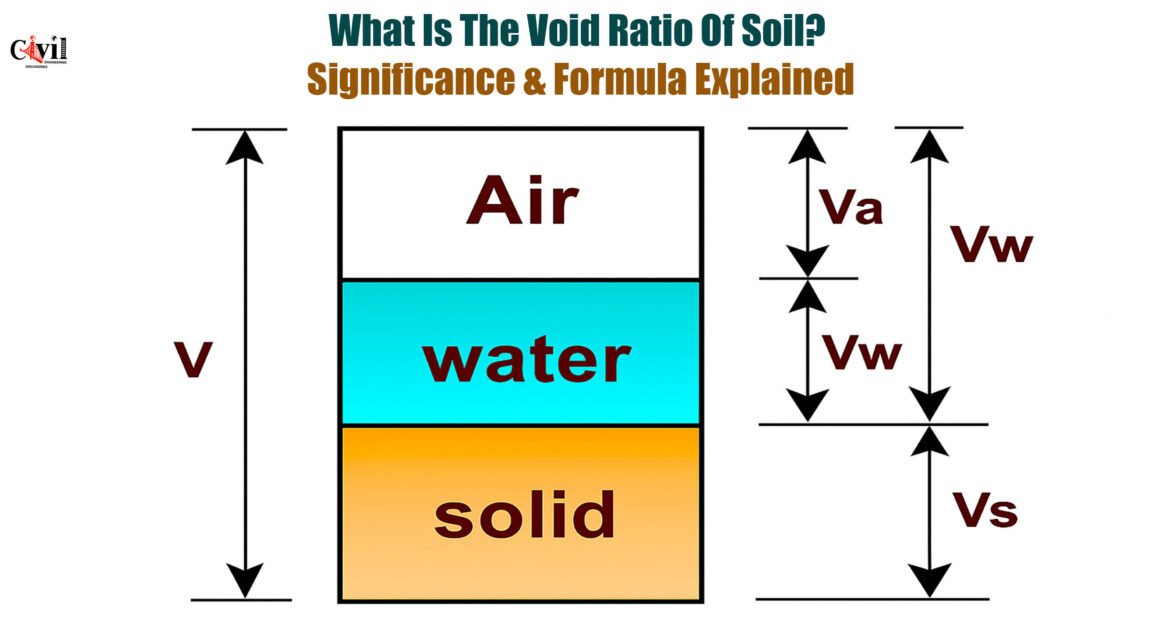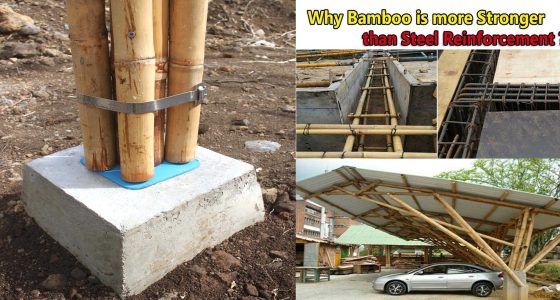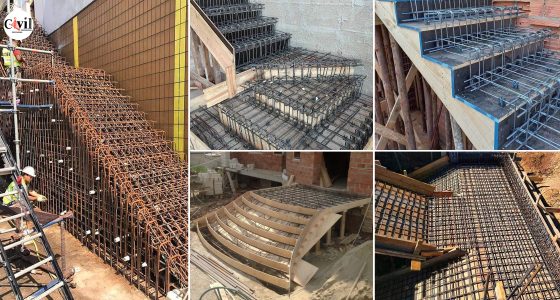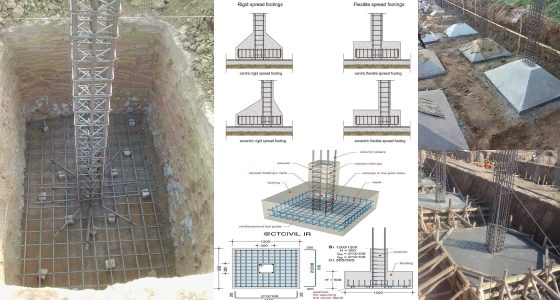The void ratio of soil is a key parameter in geotechnical engineering. It plays a critical role in determining soil behavior under various conditions. Understanding this concept helps engineers assess soil strength, stability, and suitability for construction.
Definition of Void Ratio
The void ratio (e) is defined as the ratio of the volume of voids (Vv) to the volume of solids (Vs) in a soil sample. In simpler terms, it represents how much space exists compared to the solid particles.
Void Ratio Formula
The basic equation is:
e = Vv / Vs
Alternatively, using the total volume (V), it can also be expressed as:
e = Vv / (V – Vv)
Where:
-
V = Total volume of the soil
-
Vv = Volume of voids (air + water)
-
Vs = Volume of solids
-
Va = Volume of air
-
Vw = Volume of water
This formula allows for easy calculation when values are obtained from lab or field tests.
Symbol and Unit of Void Ratio
The symbol used for the void ratio is “e”.
The void ratio is dimensionless since it is a ratio of two volumes. That means it has no units. It is typically expressed as a decimal, such as 0.45, or sometimes as a percentage.
Importance of Void Ratio in Soil Engineering
The void ratio is not just a number—it holds significant meaning. It affects several crucial soil properties, including:
-
Permeability: High void ratio means more space for water to flow.
-
Shear Strength: Soils with lower void ratios are usually stronger.
-
Compressibility: Soils with higher void ratios compress more under pressure.
-
Porosity: Although related, void ratio gives a more direct measure of void spaces in proportion to solids.
-
Density: Influenced by how closely the particles are packed.
The void ratio is therefore a direct indicator of how loose or compact the soil is, and it influences design choices in foundation engineering, retaining walls, and embankment stability.
Can the Void Ratio of Soil Be Zero?
No, the void ratio of soil can never be zero. There is always some void space—either filled with water or air—between soil particles.
Even the most compacted soil contains some gaps. Thus:
Void Ratio (e) > 0
This rule applies to all natural and artificial soils.
Why Void Ratio Matters More Than Porosity
While porosity measures the percentage of void space in a given volume, the void ratio directly compares voids to solids. This makes void ratio more useful in engineering calculations involving stress, settlement, and strength. Engineers prefer using void ratio when designing foundations or assessing soil behavior under loading.
Click Here To See Methods To Improve The Bearing Capacity Of Soil






